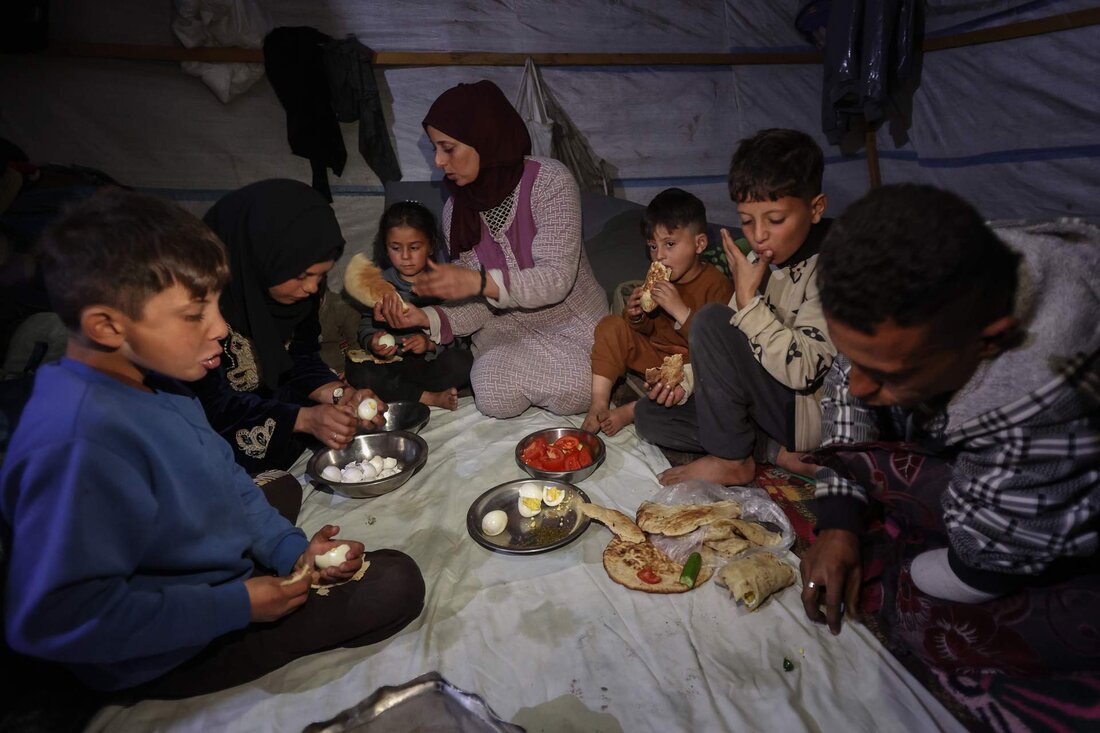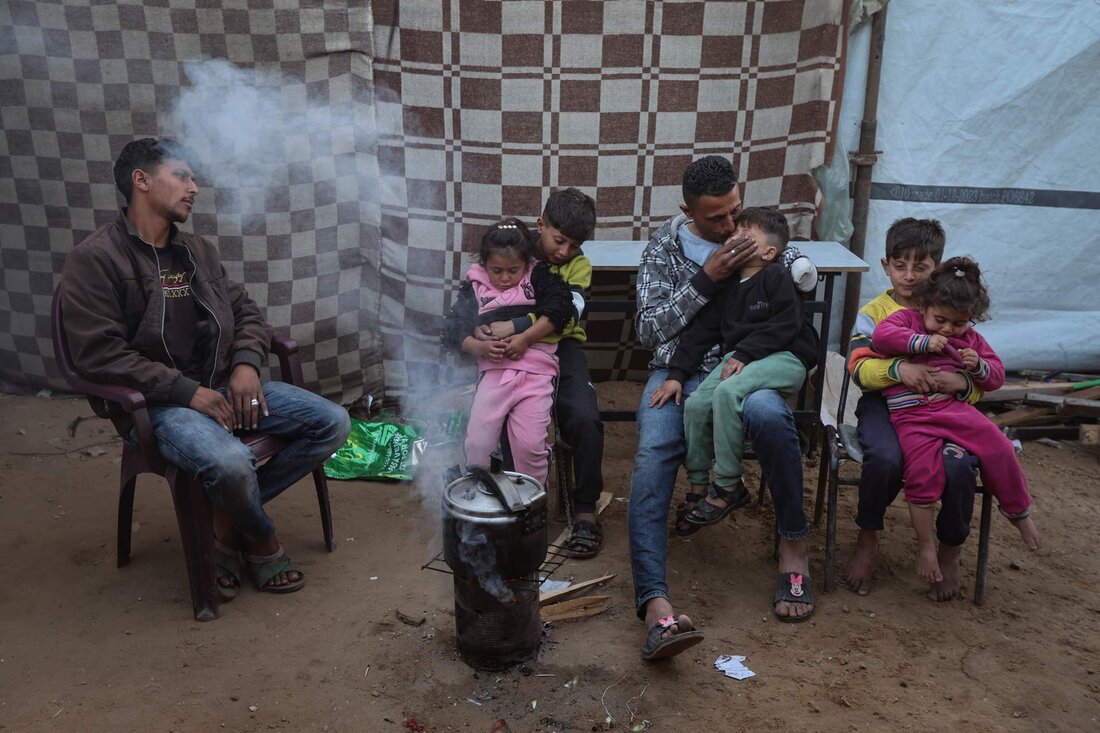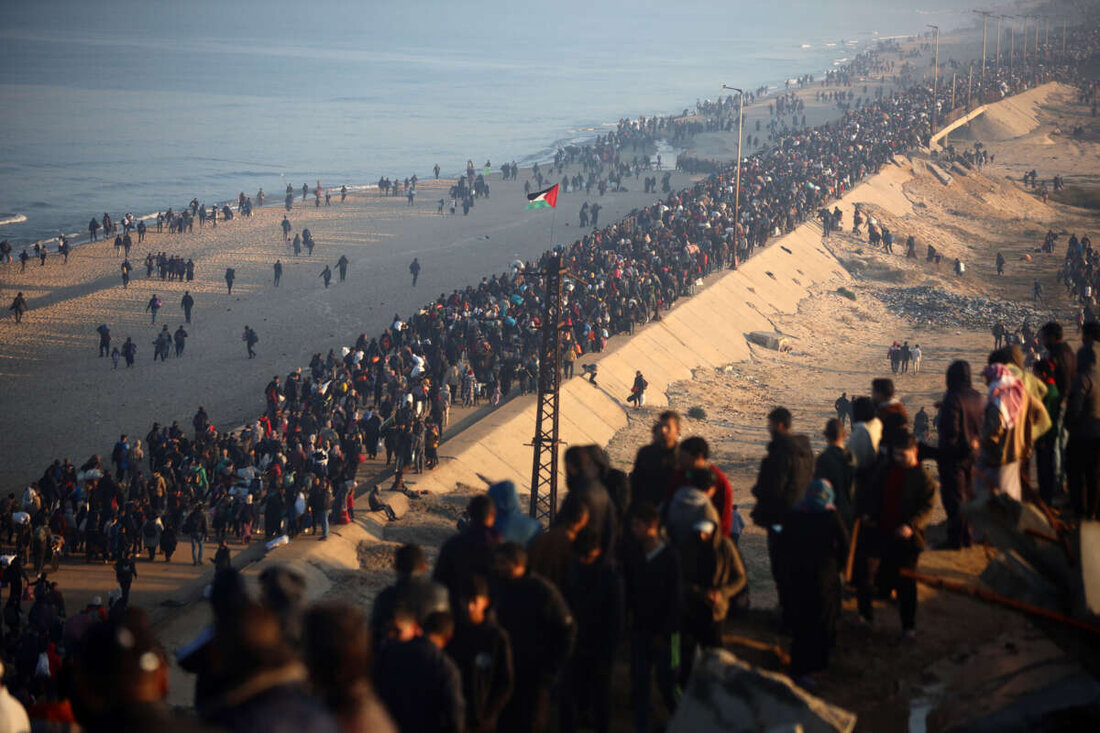A Pending Deal
The days felt unbearably heavy, as if mountains were laying across my chest. Every passing moment, I found myself restlessly sifting through conflicting news about an impending ceasefire deal, which seemed to hold the key to ending the torment of life in the tents. Would this cycle of displacement finally come to an end? Would the dark cloud of fear and forced expulsion truly dissipate? As January 2025 stretched before me endlessly, I was torn between despair and fleeting dreams of hope.
Finally, a solution began to emerge. In the evening of Wednesday, January 15, a long-awaited ceasefire agreement was announced. We all rushed out of our tents, crying out in joy, as if we had finally reclaimed a fragment of our dignity — lost amidst the chaos of death and destruction. But soon, a lump formed in my throat. The happiness was incomplete. A flood of painful memories and loss overwhelmed me, and I found myself sobbing uncontrollably. I cried for the pain of losing my sister, for the endless misery of displacement, and for the long nights of terror. In that moment, my tears were a mix of deep sorrow and longing — a yearning for my land, for Gaza, for the life that had become nothing but memories, and for the loved ones stolen from us by this genocide. Each day this nostalgia grew stronger until it seemed to stretch through every moment of my existence.
Genocide Until the Last Breath
Yet things did not unfold smoothly, as is the occupation’s vile habit to taint every aspect of our lives with misery wherever we are. The ceasefire delays were nothing but an extension of the ongoing genocide, one that did not stop at the destruction of homes but continued to claim more martyrs until the moment the truce took effect. On the Saturday night before the ceasefire, my fear was indescribable. I clung to my children, drowning in terrifying thoughts, desperate to keep them safe, afraid I might lose them in that final night of horror. Sounds of relentless bombardment filled the air, demolishing buildings around our place of refuge. Our eyes were fixed on the clock, anxiously awaiting 8:30 a.m. on Sunday, but the occupation had other plans. They insisted on robbing us of our joy, delaying the truce for several more hours, leaving us with the bitter taste of postponed hope, even in the war’s last moments.
In those days, the details of the deal consumed my thoughts the most — especially the timeline and logistics of the displaced returning home. The information we heard was contradictory and unclear, and the uncertainty gnawed at my nerves. After much back-and-forth, it was finally confirmed: The return would begin on Sunday, January 26, exactly one week after the ceasefire.
Shortly Before Return
That week felt unbearably long, and my emotions were a tangled mess of confusion and anticipation. During that time, I helped out at a shelter near our place of displacement. The work helped the days pass faster. After my shifts, I would sit by the sea, trying to escape the haunting thoughts — What if something happened to cancel the agreement? Would I spend the rest of my life in a tent? Would the day of return ever truly come? Would I ever walk Gaza’s streets again? Would this nightmare of displacement finally end? Would our anxiety truly subside, or would we remain prisoners of longing, just like our grandparents after the Nakba of 1948? These questions swirled inside me, unanswered.
My tent was in the closest possible location to Gaza — on the shore of Al-Nuseirat refugee camp near Nuweiri Hill. As the ceasefire date approached, displaced people flocked to the area, setting up temporary tents to be as close as possible to their former homes. Despite the bitter cold and the lack of basic necessities, everyone was willing to endure the hardships of waiting, holding onto the hope that return was near. At night, many lit fires for warmth while the young men sang nationalistic songs to try to uplift spirits and fill the endless hours.
We had many belongings, and I worried that the journey home would exhaust my children, so my small family decided to return by car. The decision saddened me because people in vehicles would have to take a longer route than those returning on foot. The pedestrians were to take Al-Rashid Street along the western coast, while vehicles were allowed to return via a parallel road eastward along Salah al-Din Street. I wished I could return via Al-Rashid Street — it was the fastest way to my home in Gaza.
Finally, Saturday night arrived — the night that was supposed to mark the end of our displacement. But the occupation’s obstinacy forced yet another delay, pushing the return back by an entire day. More than a million displaced people spent the night in fear and uncertainty, wondering if we would truly be allowed to go back. But this torment lasted only a day. It was announced that the return would begin on Monday, January 27. I spent the last day packing whatever we could carry. Then we sat by the sea. We were displaced for the last time, filled with hope and anxiety.

The Scene of Return
At last, the sun rose on Monday, January 27 — our long-awaited day of return. The displaced did not wake up that morning, for they had not slept at all, overwhelmed with longing and anticipation. Everyone was ready to leave. Some carried their tents on their backs, for they had no home to return to. Others set their tents ablaze, as if to burn away the memories of suffering they had endured throughout the genocide. From all directions, the displaced surged toward the coastal road: families, children, the elderly — all making their way toward Gaza with unwavering determination.
I saw an elderly woman leaning on her cane and walking slowly, yet she was still returning! She wore the traditional Palestinian dress, a sign that she had lived through the Nakba of 1948. This time, however, she was returning to a refugee camp and not her original village. I saw mothers carrying newborns in their arms — tiny souls born during the war, going home for the first time. I saw young men who had lost limbs in the war racing against time to reach Gaza. Some used crutches; others still had metal rods protruding from their healing limbs. Despite their pain, they chose to walk back. Those who could not walk were carried by their loved ones on stretchers or pushed in wheelchairs, refusing to be left behind. Many had come from distant displacement sites like Khan Younis and Deir Al-Balah, making the journey on foot through the dense crowds, as vehicles were unable to reach them. They would remove items from their luggage out of exhaustion and then continue on their way. The entire scene was overwhelming, and my heart yearned to join the march of returnees on foot.
“Oh, paths of return, crowned with longing”
We got into the car and headed toward Salah Al-Din Road, where vehicles had been gathered for days, awaiting the moment of return. The line stretched from Khan Younis in the south to al-Nuseirat in the north — an exhausting sight. We decided to take a shortcut via a dirt road in Al-Nuseirat to save hours avoiding traffic. The erratic road had been carved out by the occupation, like an erratic snake, twisting aimlessly. There was no reason for its countless turns except to inflict further suffering on the displaced until the very end. The road opened in the Mughraqa area, now a completely leveled land, resembling a desert of endless rubble. We saw a few residents searching through the remains of their homes, hoping to salvage anything to sustain them in their hardship. Warning signs on the eastern side of the road forbade us from approaching, as the occupation forces were still present. Tanks stood on the horizon, and occasionally, a warning shot would ring out.
The road was congested and completely devoid of basic necessities. We passed many stranded cars, their fuel exhausted or their batteries dead — just a few of the many difficulties people faced while navigating these devastated, debris-filled areas. After many hours, we reached a vehicle inspection point, overseen by the Egyptians from the Egyptian-Qatari committee, as per the agreement. In the background, American Marines monitored the inspection process, fully armed.
I stepped out with my children while my husband drove the car through a scanner device. A U.S. soldier waved at the children from a distance with a broad smile — an odd and unfamiliar sight in such dire times. The Egyptian official greeted us with his warm accent, evoking mixed feelings of estrangement and sorrow. I clutched my children’s hands in anguish and went to wait for my husband on the other side of the road.
The Reunion
Minutes now separated me from Gaza. I saw no standing buildings ahead. We faced an unbelievable sight, endless stretches of rubble. Streets, alleys, and entire neighborhoods had been completely erased. For over fifteen minutes, we saw no human presence until we finally spotted a group of young men. We asked them where we were, and they replied that we were on Street 8 in southern Gaza City. We could hardly believe what we saw — everything around us had been obliterated to the point that we could see the sea from afar, obstructed by nothing!
The joy in my heart froze. Everything was ash — no life, no hope. We moved through unfamiliar roads, guessing the locations of streets and landmarks we once knew. Gradually, we began to see signs of life. But what kind of life was this? Destroyed streets, trash scattered everywhere, sewage flooding every corner. Some houses were barely habitable, yet people still lived in them, clinging to existence despite the unbearable conditions. Small fires burned in various places, ignited by hands seeking warmth in a world of cold death.
We navigated the streets until we reached my family’s home, where my parents awaited me. My father — a steadfast oak tree, who had survived the Nakba of 1948 — had spent a lifetime in exile before finally settling in Gaza. He had adamantly refused to leave, not just the city but even his home. He firmly believed in our return and insisted that all attempts to displace Gazans would fail, just as they had throughout Palestinian history. And my mother — the fragrant blossom of my days — had faced all this devastation by maintaining life in a warm, clean home despite the relentless blows of extermination, siege, and starvation. The shells had devoured the rooms, the windows, and the doors of the house one by one, yet she endured.
As I approached the house’s open doors, I was greeted by the scent of the ancient jasmine tree, still enchanting even after its branches had been withered by shelling and white phosphorus. My heart raced ahead of my feet, and I threw myself into my parents’ embrace, unable to believe that this reunion was finally happening after months of separation, deprivation, and tears. I couldn’t believe that I would sleep in the warmth of a home, under a roof, in a bed — that the nights in a tent were over, at least for now.
We went to check on our own home, which was in an area affected by the ground invasion. At first, we didn’t recognize the street or the neighborhood. Miraculously, the building was still standing. But, as always in Gaza, happy endings never last. After engineers examined the structure, they determined that its western foundations needed to be demolished and that the water, electricity, and sewage networks were completely destroyed. Our apartment had multiple holes from shelling and bullets, parts of it were burned, and whatever had survived the war had been looted by thieves.

Gaza, the Phoenix
It took me a few days to believe that I was truly in Gaza. Day after day, we wandered the streets, walking among ruins, searching for the familiar landmarks that had changed forever. Nowadays, I pass by a destroyed place and try to recall what once stood there. Most of the time I fail, even though I once knew Gaza as well as the lines on my own palm. It feels like piecing together a puzzle lost in my memory. I see the same streets every day and am still astonished by the destruction. New details of this devastation reveal themselves each day.
I walk with lost eyes, searching for the old Gaza I loved, but I cannot find it. My steps are heavy with sorrow, as I tread on soil mixed with the blood of martyrs. I pass through alleys that once echoed with children’s laughter and sounds of life, but now they are silent. The houses have turned into graves, holding the remains of their inhabitants to this very moment. I continue walking, imagining that I can still hear the sounds of those past joys. Tears gather in my heart, but do not escape my eyes. It seems as if I have lost the ability to cry.
Yet this phoenix city always rises from death, always carves its way back to life, a flower blooming from the harshness of the rubble. Despite all the suffering and the ongoing siege, the people of Gaza strive to revive what remains of their homes or to turn the land that once held a thriving house into a place for a new tent. At a time when the world has failed to fulfill its promises of reconstruction, Gaza’s brave youth continue to hold hope in their hearts, determined to reclaim life from beneath the ruins. Gaza, which has survived the clutches of genocide, will always remain in the hearts of those who have lived there or known it — a city of hope and resistance that refuses to die, no matter the circumstances. Gaza, the only city of sincerity in a world full of deception and betrayal.
Even if the whole world turns its back on us, we will remain loyal. Gaza will continue to resist, to rise from death, as it always has throughout history.
And as I always say: We will remain, and Gaza will remain — until the very end.
Nour Abdel Latif is a mother and writer from North Gaza. This piece appears in the sixteenth issue of The New York War Crimes. Read her previous piece for the NYWC — a diary of displacement and sorrow, published on October 7th, 2024 — here.


